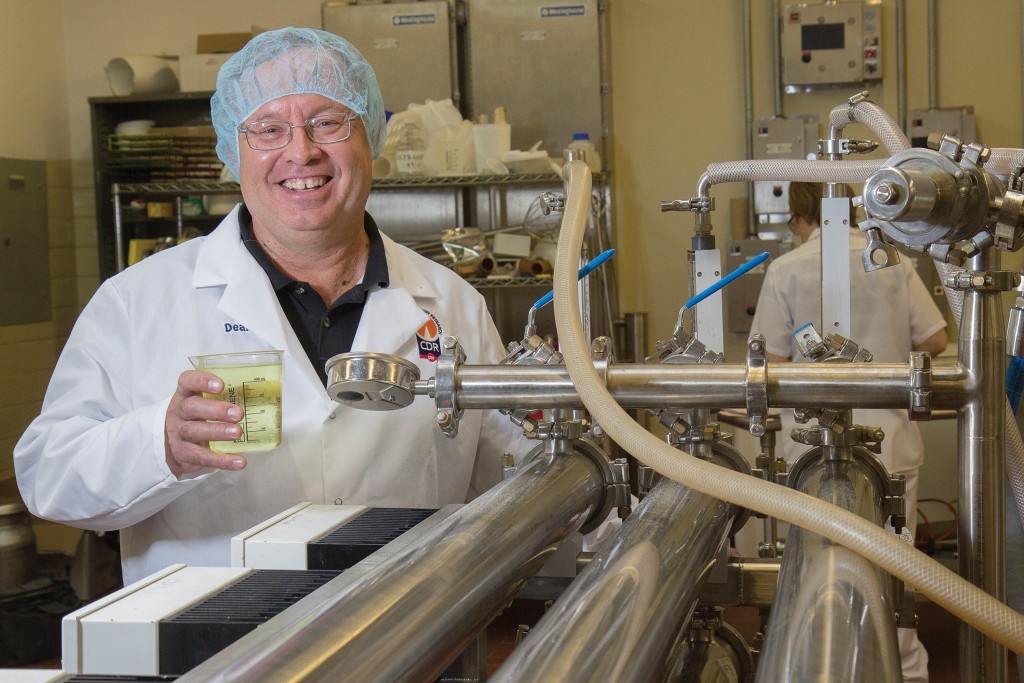Center for Dairy Research turns yogurt waste into new products

University of Wisconsin–Madison Center for Dairy Research food technologist Dean Sommer showing a beaker of acid whey. The high-tech filters used to separate the various components are inside the metal pipes.
Photo courtesy of UW–Madison College of Agricultural and Life Sciences
With exploding consumer demand for Greek yogurt, production is up. That’s great for food companies’ bottom lines, but it also leaves them dealing with a lot more acid whey, a problematic byproduct of the Greek yogurt-making process.
Acid whey, if not properly disposed of, can cause environmental problems. Currently, companies typically pay to landspread it on farmers’ fields or dump it down the drain. Some plants are starting to send it to anaerobic digesters, where it’s fermented to produce methane.
Scientists at the University of Wisconsin–Madison are developing a better option — one that will transform this trash into treasure.
“The whole goal is to take this problematic mixture of stuff — acid whey — and isolate all of the various components and find commercial uses for them,” says Dean Sommer, a food technologist with Wisconsin Center for Dairy Research (CDR) in the UW–Madison College of Agricultural and Life Sciences.
That’s no easy task.
Food companies have been separating the components of sweet whey — the byproduct of cheese production — for more than a decade now, extracting high-value whey protein powders that are featured in muscle-building products and other high-protein foods and beverages.
Compared to sweet whey, however, acid whey from Greek yogurt is hard to work with. Similar to sweet whey, it’s mostly water — 95 percent — but it contains a lot less protein, which is considered the valuable part. Some of the other “solids” in acid whey, which include lactose, lactic acid, calcium, phosphorus and galactose, make it more difficult to process. For instance, thanks to galactose and lactic acid, it turns into a sticky mess when it’s dried down.
Instead of drying it, CDR scientists are developing technologies that utilize high-tech filters, or membranes, to separate out the various components.
“We’re taking the membranes that are available to us and stringing them together and developing a process that allows us to get some value-added ingredients out at the other end,” says dairy processing technologist Karen Smith, who is working on the project.
At this point, the CDR has set its sights on lactose, an ingredient that food companies will pay good money for in food-grade form.
“It’s the lowest-hanging fruit, the most valuable thing in there in terms of volume and potential worth,” says Sommer.
The technology is quite far along. While Sommer can’t divulge names, a number of companies are already implementing lactose-isolating technology in their commercial plants.
Isolating the other components will come later, part of the long-term vision for this technology. When it’s perfected, explains Sommer, acid whey will be stripped of its ingredients until there’s nothing left. “It will just be water,” he says.




